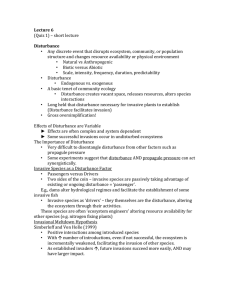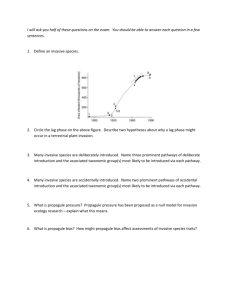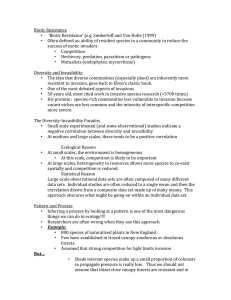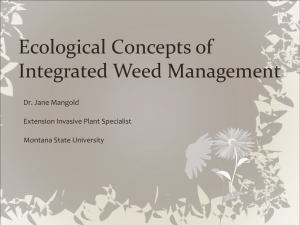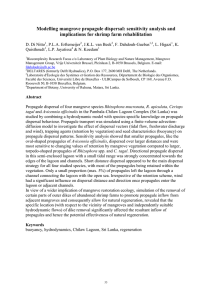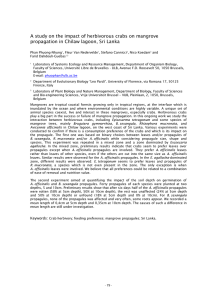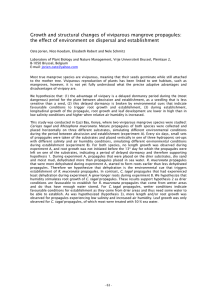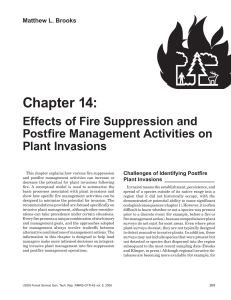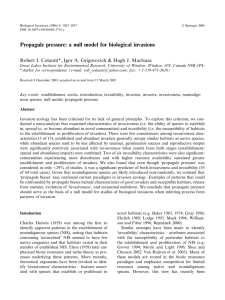Lecture 5 Major Vectors Continued Legal and Illegal Pet trade
advertisement
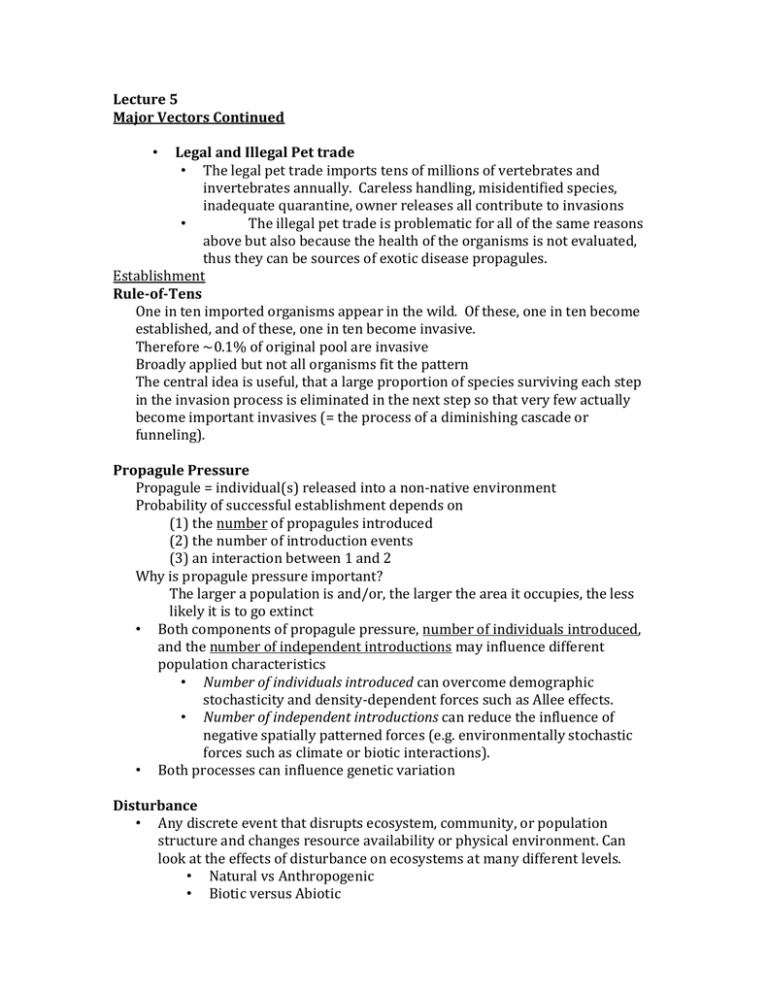
Lecture 5 Major Vectors Continued Legal and Illegal Pet trade • The legal pet trade imports tens of millions of vertebrates and invertebrates annually. Careless handling, misidentified species, inadequate quarantine, owner releases all contribute to invasions • The illegal pet trade is problematic for all of the same reasons above but also because the health of the organisms is not evaluated, thus they can be sources of exotic disease propagules. Establishment Rule-of-Tens One in ten imported organisms appear in the wild. Of these, one in ten become established, and of these, one in ten become invasive. Therefore ~0.1% of original pool are invasive Broadly applied but not all organisms fit the pattern The central idea is useful, that a large proportion of species surviving each step in the invasion process is eliminated in the next step so that very few actually become important invasives (= the process of a diminishing cascade or funneling). • Propagule Pressure Propagule = individual(s) released into a non-native environment Probability of successful establishment depends on (1) the number of propagules introduced (2) the number of introduction events (3) an interaction between 1 and 2 Why is propagule pressure important? The larger a population is and/or, the larger the area it occupies, the less likely it is to go extinct • Both components of propagule pressure, number of individuals introduced, and the number of independent introductions may influence different population characteristics • Number of individuals introduced can overcome demographic stochasticity and density-dependent forces such as Allee effects. • Number of independent introductions can reduce the influence of negative spatially patterned forces (e.g. environmentally stochastic forces such as climate or biotic interactions). • Both processes can influence genetic variation Disturbance • Any discrete event that disrupts ecosystem, community, or population structure and changes resource availability or physical environment. Can look at the effects of disturbance on ecosystems at many different levels. • Natural vs Anthropogenic • Biotic versus Abiotic Scale, intensity, frequency, duration, predictability • Endogenous vs. exogenous (part of system or imposed by outside forces) A basic tenet of community ecology • Disturbance creates vacant space, releases resources, alters species interactions Long held that disturbance necessary for invasive plants to establish (Disturbance facilitates invasion) Gross oversimplification! • • • •

